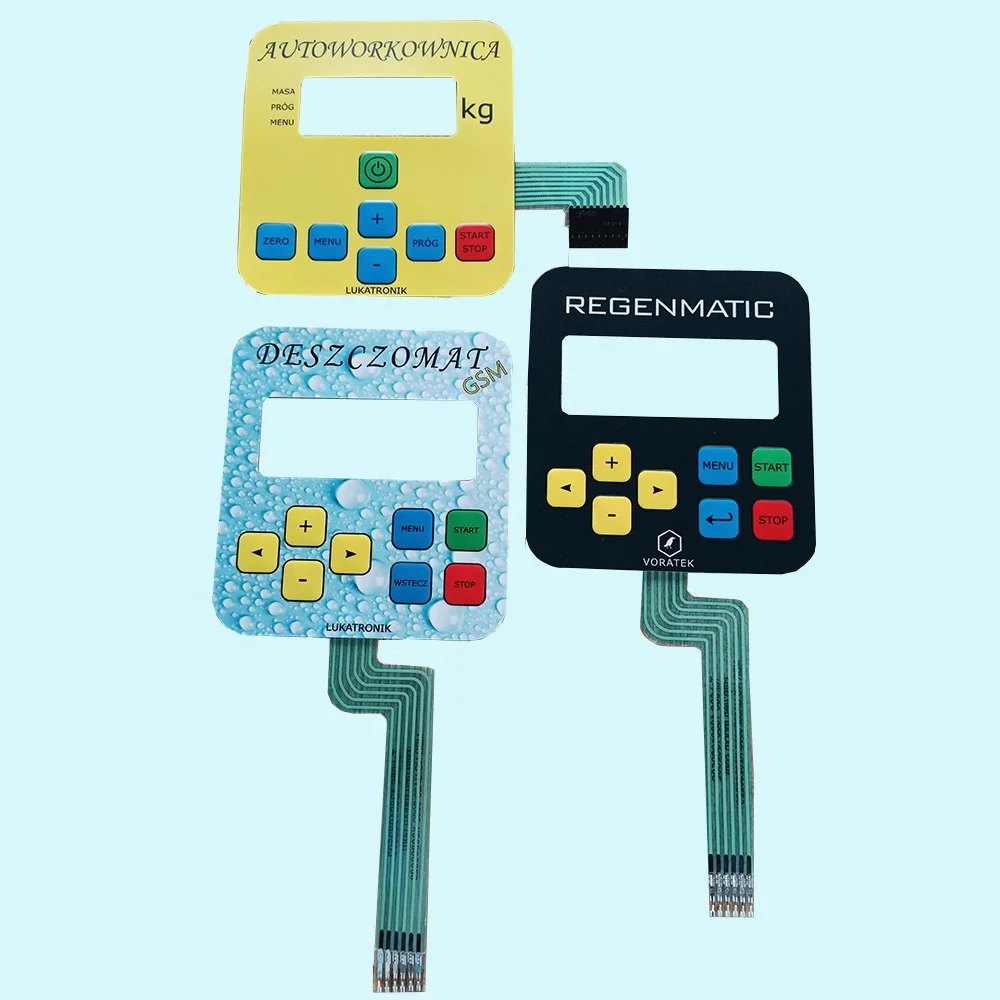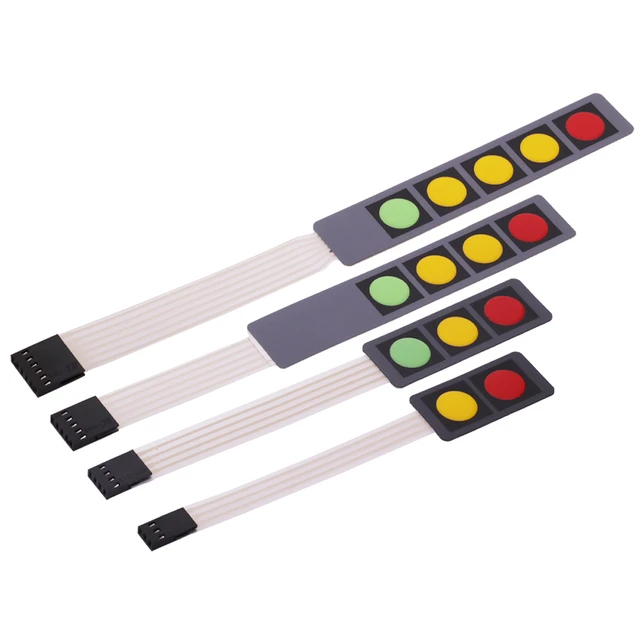How Membrane Switch Technology is Revolutionizing User Interfaces
How Membrane Switch Technology is Revolutionizing User Interfaces
Blog Article
The Advantages of Using Membrane Layer Changes in Consumer Electronics
Membrane switches are progressively acknowledged for their substantial benefits in customer electronic devices, especially in improving individual communication and simplifying manufacturing procedures. The flexibility in layout permits for customized remedies that fulfill varied consumer needs.
Enhanced User Experience

In today's affordable landscape of consumer electronic devices, boosted individual experience is critical; nearly 85% of individuals focus on user-friendly interfaces. Membrane layer switches play an essential role in attaining this level of use.
The tactile responses supplied by membrane switches is essential for directing user activities, guaranteeing that commands are signed up accurately. This responses system reduces mistakes and heightens individual complete satisfaction, cultivating a favorable connection in between the user and the gadget. The adjustable nature of membrane layer switches allows producers to tailor user interfaces to specific user requirements, making gadgets much more easily accessible and welcoming.
In addition, membrane buttons can integrate backlighting and graphic overlays, additionally boosting presence and usability in diverse atmospheres. This versatility makes sure that tools continue to be easy to use and useful, despite the setting. Generally, the assimilation of membrane layer changes into consumer electronics dramatically boosts user experience, driving brand name loyalty and satisfaction in a progressively affordable market.
Affordable Manufacturing
Customer electronics manufacturers are constantly looking for methods to stabilize quality with price, and membrane buttons supply an engaging service for affordable manufacturing. These components are naturally less complex than conventional mechanical buttons, which lowers both production costs and complexity. The light-weight design of membrane switches over permits for lower delivery expenditures and less complicated integration right into compact devices, further improving their allure in an open market.
Producers can produce membrane layer switches in high quantities, taking advantage of economies of scale. This automation capacity guarantees regular quality while significantly decreasing per-unit expenses. Furthermore, the materials used in membrane switches, such as polyester and polycarbonate, are frequently more economical than those needed for standard button modern technologies, adding to general cost savings.
The production process for membrane layer changes commonly calls for fewer steps and much less labor compared to various other button kinds. This streamlined method not only conserves on labor prices yet likewise speeds up time-to-market, allowing firms to respond promptly to customer demand. The mix of reduced product expenditures and reliable manufacturing processes placements membrane layer switches as a clever financial investment for makers aiming to deliver high-quality consumer electronics at competitive price points.

Style Adaptability and Modification
While conventional mechanical switches usually impose limitations on layout because of their mass and required installing devices, membrane layer switches offer unmatched flexibility and modification alternatives for customer electronics. This ingenious modern technology allows designers to develop sleek, low-profile interfaces that can effortlessly incorporate into numerous item visual appeals, from mobile phones to cooking area devices.
Membrane buttons can be generated in practically any form or dimension, enabling producers to tailor the layout to certain ergonomic and practical needs. This flexibility not just boosts individual experience yet additionally enables imaginative layouts that line up with brand name identification. The usage of printed graphics on membrane layer switches over supplies the chance for vivid shades and complex styles, which can be easily modified without substantial expense implications.
Additionally, membrane layer buttons can incorporate numerous performances into a solitary layer, minimizing the requirement for multiple elements and simplifying setting up processes. This structured style strategy lessens area and weight, making it perfect for portable consumer electronics. In general, the layout versatility and customization capacities of membrane layer switches over empower manufacturers to introduce, ultimately leading to even more easy to use and interesting items.
Sturdiness and Reliability
As innovation remains to progress, the sturdiness and reliability of membrane layer buttons have ended up being crucial factors to consider for producers in the customer electronics market (membrane switch). Membrane buttons are developed to hold up next against severe ecological conditions, including temperature level variations, dampness, and dust direct exposure. Their robust building often involves multi-layered materials that offer a reliable barrier against pollutants, making certain durability and consistent efficiency

Furthermore, membrane layer switches can withstand a substantial number of actuations without loss of performance, often surpassing countless cycles. This sturdiness converts to lower substitute expenses and lowered downtime for producers and customers alike. Generally, the combination of environmental durability and mechanical integrity makes membrane layer switches a calculated choice for consumer electronics, guaranteeing that gadgets continue to be efficient and navigate here functional throughout their designated life-span.
Streamlined Item Advancement
The toughness and integrity of membrane layer switches over significantly add to streamlined product development in the customer electronic devices market. By integrating these switches early in the style procedure, suppliers can lower the complexity and variety of elements needed in their products (membrane switch). Membrane buttons are light-weight and portable, permitting extra reliable room use within gadgets, which can cause simplified assembly procedures
In addition, the modification capacities of membrane buttons allow developers to tailor features especially to consumer demands without sustaining excessive costs or hold-ups. This flexibility fosters advancement, as companies can swiftly iterate styles based on market responses, inevitably speeding up the time-to-market for brand-new products.
The convenience of producing membrane layer switches additionally plays an important role in item development. With contemporary printing strategies and products, manufacturing can be scaled efficiently, decreasing lead times and lowering waste. This causes lower manufacturing prices, enhancing general earnings.
Conclusion
To conclude, membrane switches substantially enhance consumer electronic devices by providing an enhanced customer experience, cost-effective manufacturing procedures, and flexible layout options. Their sturdiness and integrity make certain consistent performance in different settings, while structured product development helps with quicker time-to-market. These benefits jointly add to the innovation and functionality of customer devices, dealing with the progressing needs of customers successfully. The assimilation of membrane layer switches represents a strategic choice for suppliers seeking to optimize Get More Information product design and performance.
Membrane layer switches are increasingly recognized for their substantial benefits in customer electronic devices, especially in improving user communication and simplifying production processes. Additionally, the products utilized in membrane buttons, such as polyester and polycarbonate, are often much less costly than those required for standard button technologies, contributing to total expense savings.
The production process for membrane switches over commonly needs less steps and much less labor compared to other button types. Unlike conventional mechanical buttons, which may put on out over time, membrane layer changes utilize a covered style that decreases the risk of mechanical failure.In final thought, membrane changes considerably boost consumer electronics by supplying an improved individual experience, cost-effective production procedures, and versatile style options.
Report this page